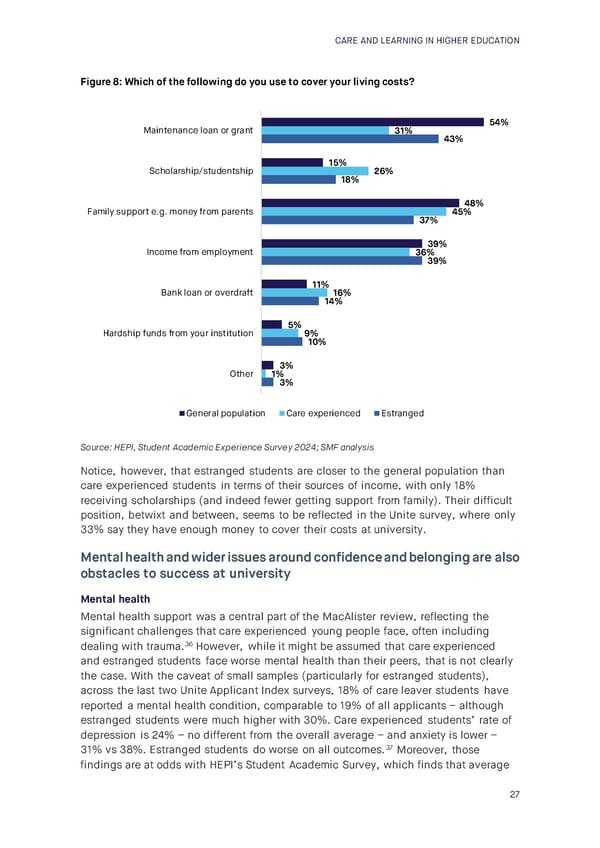CARE AND LEARNING IN HIGHER EDUCATION Figure 8: Which of the following do you use to cover your living costs? Maintenance loan or grant 31% 54% 43% Scholarship/studentship 15% 26% 18% Family support e.g. money from parents 48% 37% 45% Income from employment 39% 36% 39% Bank loan or overdraft 11% 16% 14% Hardship funds from your institution 5%9% 10% Other 3% 1% 3% General population Care experienced Estranged Source: HEPI, Student Academic Experience Survey 2024; SMF analysis Notice, however, that estranged students are closer to the general population than care experienced students in terms of their sources of income, with only 18% receiving scholarships (and indeed fewer getting support from family). Their difficult position, betwixt and between, seems to be reflected in the Unite survey, where only 33% say they have enough money to cover their costs at university. Mental health and wider issues around confidence and belonging are also obstacles to success at university Mental health Mental health support was a central part of the MacAlister review, reflecting the significant challenges that care experienced young people face, often including dealing with trauma.36 However, while it might be assumed that care experienced and estranged students face worse mental health than their peers, that is not clearly the case. With the caveat of small samples (particularly for estranged students), across the last two Unite Applicant Index surveys, 18% of care leaver students have reported a mental health condition, comparable to 19% of all applicants – although estranged students were much higher with 30%. Care experienced students’ rate of depression is 24% – no different from the overall average – and anxiety is lower – 31% vs 38%. Estranged students do worse on all outcomes.37 Moreover, those findings are at odds with HEPI’s Student Academic Survey, which finds that average 27
 Care and Learning in Higher Education Page 27 Page 29
Care and Learning in Higher Education Page 27 Page 29